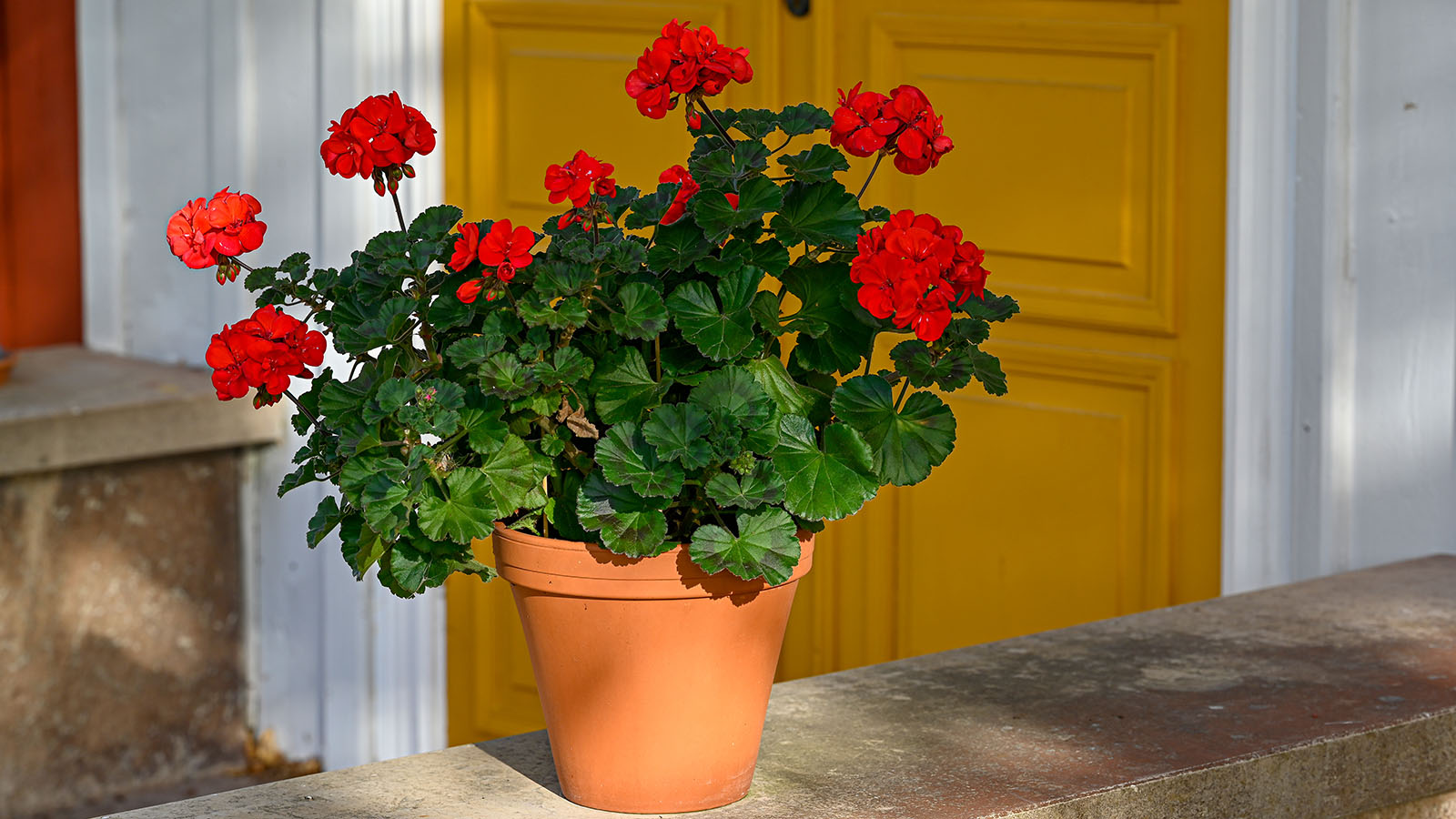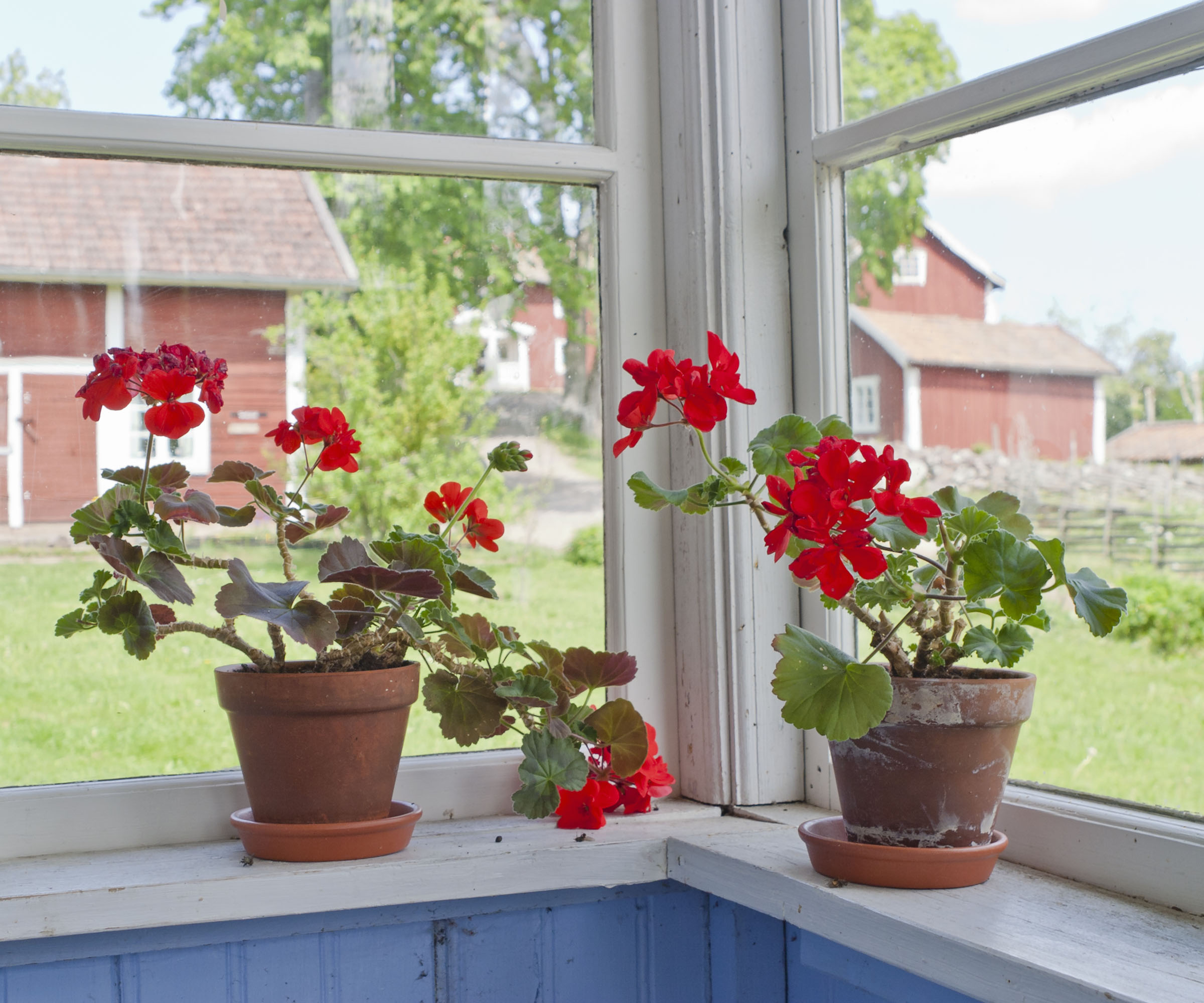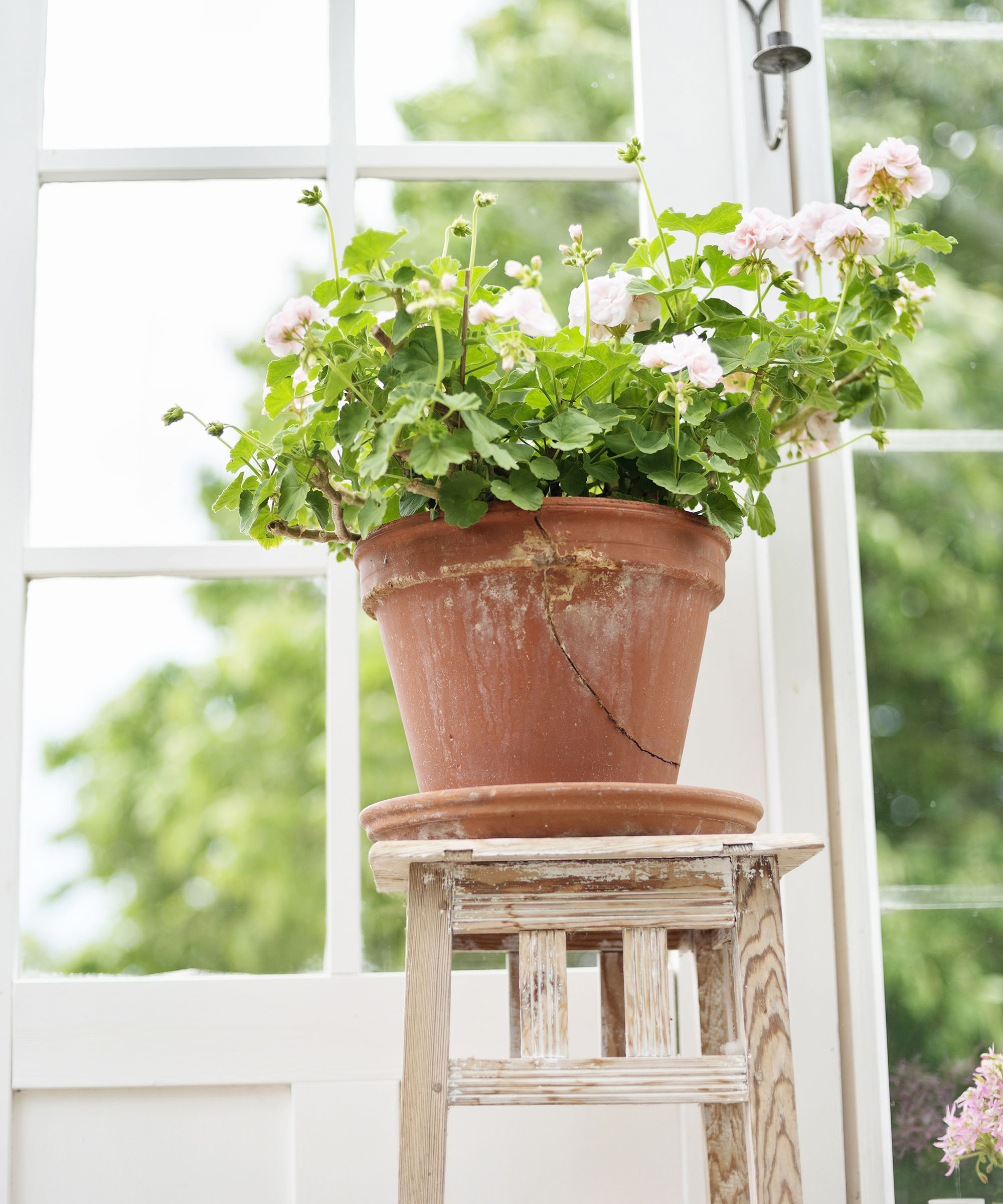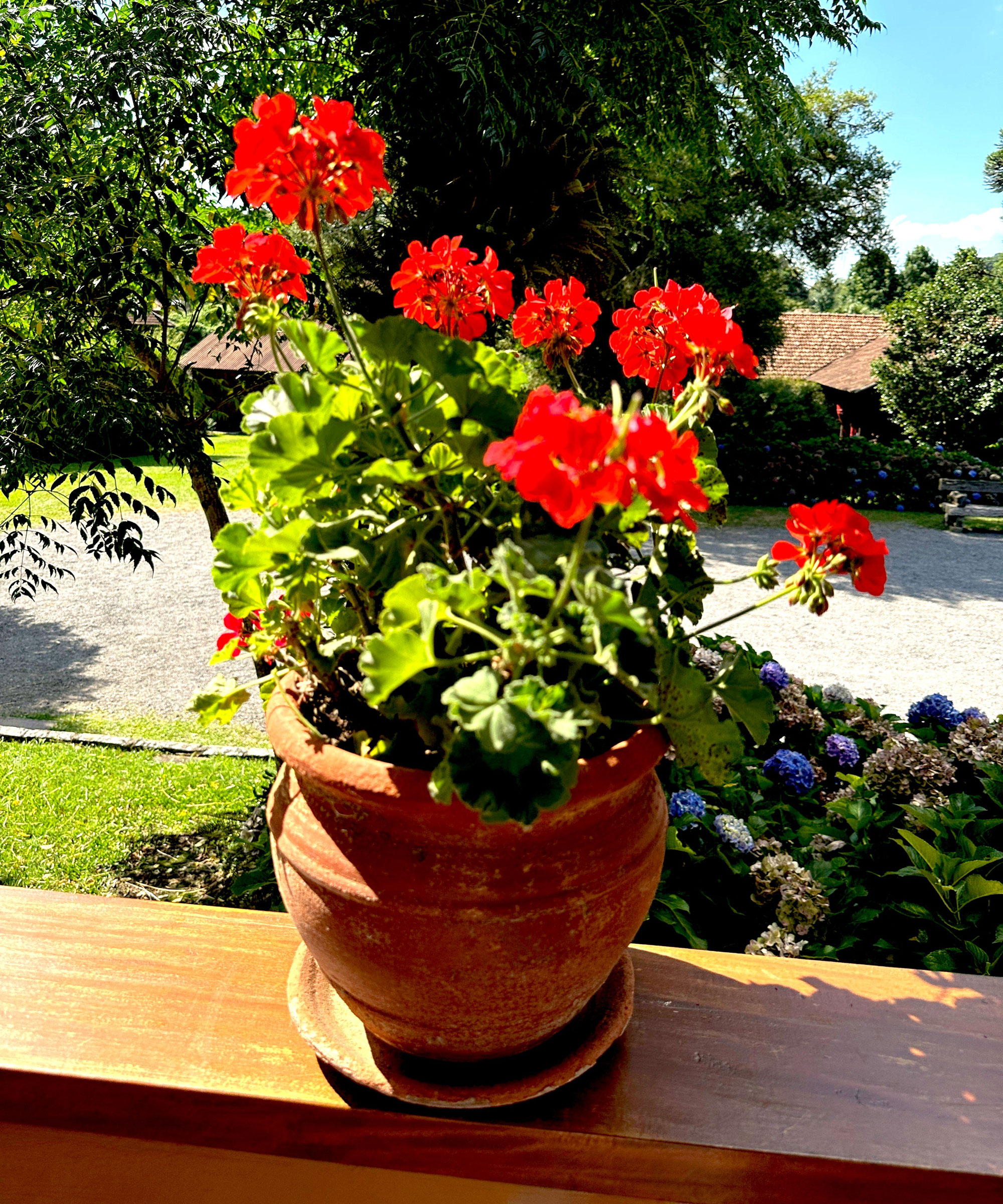Pelargonsjuka Is the Cozy Scandi Gardening Trend to Try This Fall if You Love Geraniums
If your garden is filled to bursting with geraniums, you need to embrace pelargonsjuka, stat!


While most gardeners are packing away the patio furniture and preparing for winter right about now, Scandinavian plant lovers are just getting started. Especially, as anyone who’s even heard of pelargonsjuka will attest, when it comes to their beloved geraniums.
Yes, in Sweden and Norway, pelargonsjuka is an affectionate term for someone who simply can’t stop, won’t stop collecting pelargoniums (aka geraniums). But there’s more to their so-called ‘geranium fever’ than simply this; it’s resulted in a unique approach to overwintering plants, too.
As temperatures cool, pelargoniums are lifted from balconies and porches and brought indoors – not to be hidden away in basements and garages, but proudly displayed like artwork on windowsills, shelves, and even stair treads. It’s part plant care, part interior design, and completely, utterly wonderful.
Why Fall Is Prime Time for Pelargonsjuka in the U.S.

If you live in USDA Hardiness Zones 9 or colder, you already know that pelargoniums won’t survive the first frost outdoors. Rather than treating these "old-fashioned" flowers as disposable annuals, consider the Scandinavian approach: bring them in, celebrate them, and let them continue brightening your home through winter.
Even in Zones 10-11, where tender geraniums can survive outdoors year-round and don’t necessarily need any pelargonsjuka-inspired coddling, fall is still a great time to refresh tired container displays, take cuttings, or start collecting new varieties for spring.
How to Create a Scandi-Style Display at Home

You don’t need matching pots or expensive shelving for this trend. In fact, the beauty of pelargonsjuka is in the abundance of blooms. With that in mind, then, group tender geranium plants closely together rather than scattering them around your home. A crowded windowsill looks intentional; a lonely pot looks sad and forgotten.
If you really want to up the ante, stick with natural materials (this Creative Co-Op Distressed Terra Cotta Hobnail Planter from Amazon is ideal) and layer heights by using stools, benches, or stacked books to catch more light and add visual depth.
Sign up for the Gardening Know How newsletter today and receive a free copy of our e-book "How to Grow Delicious Tomatoes".
If you really have a lot of geraniums to work with, investing in a Bamworld Plant Stand from Amazon could be a good idea!
Care Tips for Happy Indoor Pelargoniums
Once your precious tender geraniums are safely indoors, it’s time to lean into that innate pelargonsjuka blooming within and start treating them more like low-maintenance houseplants, or extremely slow-moving pets, than active bloomers.
Give them a sunny windowsill, water sparingly, and avoid letting the leaves touch cold windowpanes. You may get fewer flowers during winter, but healthy foliage ensures a strong rebloom in spring.

Pelargonsjuka has found popularity outside of Scandinavia for more than its simplified version of overwintering; it’s also a beautigulreminder that gardening doesn’t have to end when temperatures drop. Instead of mourning the last blooms of summer, you get to carry them right across the threshold and into your living room.
And if that’s not a perfect excuse to “accidentally” bring home another geranium this fall, we don’t know what is…

Kayleigh is an enthusiastic (sometimes too enthusiastic!) gardener and has worked in media for over a decade. She previously served as digital editor at Stylist magazine, and has written extensively for Ideal Home, Woman & Home, Homes & Gardens, and a handful of other titles. Kayleigh is passionate about wildlife-friendly gardening, and recently cancelled her weekend plans to build a mini pond when her toddler found a frog living in their water barrel. As such, her garden – designed around the stunning magnolia tree at its centre – is filled to the brim with pollinator-friendly blooms, homemade bird feeders, and old logs for insects to nest in.